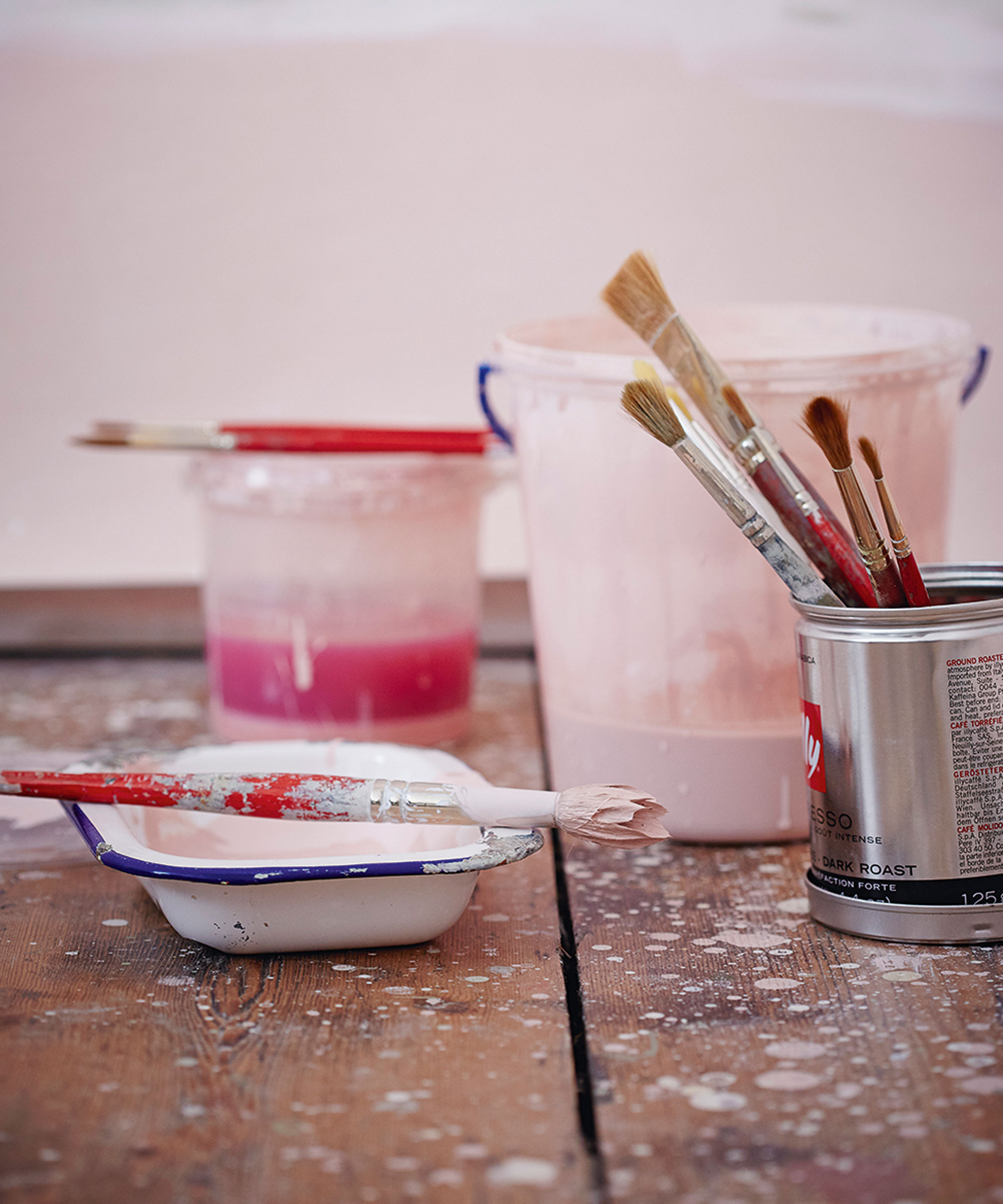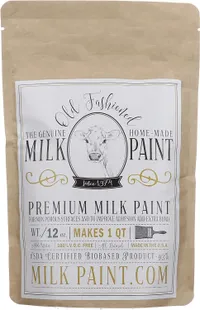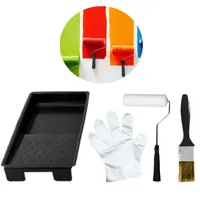What is milk paint? And how to use it in your home
Perfect for upcycling projects – our guide to milk paint shows how and when to use it

Hayley Gilbert

Milk paint may sound like something you would find in a child’s craft kit, but it is an incredible eco-conscious alternative to the acrylic emulsions we usually reach for when updating our homes and refreshing our walls.
This unassuming paint mix, made with milk paint powder and water, may seem like a fad, but it is a hardwearing and durable paint finish that has even the experts talking.
This is how to make and use milk paint in your home for some quick and easy eco-home improvements.
What is milk paint?
Milk paint is an eco paint made using naturally derived ingredients such as milk protein, lime, clay, and earth pigments similar to limewash paint. These are mixed with water to create a non-toxic yet durable alternative to acrylic paints. The result is a deep, rich color that doesn't fade.
This makes it perfect for all sorts of projects, from painting wooden furniture to painting a wall. It is touted as one of the earliest forms of paint and, thanks to its natural ingredients, is ideal for use in kids' bedrooms, playrooms, and nurseries.
Another benefit is that you don’t need a primer or undercoat and it dries really quickly, making it ideal for a number of DIY projects.
Powdered Milk Paint | View at Amazon
This powered milk paint comes in several sizes and colors, ideal for home renovations and furniture flips.
Where to use milk paint

Milk paint can be used anywhere you use regular paint. That being said, its slightly distressed or vintage-looking finish means it is best used on wooden furniture such as chests, buffets, chairs, desks, tables, dressers, and so on.
Design expertise in your inbox – from inspiring decorating ideas and beautiful celebrity homes to practical gardening advice and shopping round-ups.
That is not to say it is limited to upcycling, however. You can also use milk paint on other surfaces such as glass, plastic, plaster, and even metal – and it can be used inside and out without the need to sand down first or apply a primer or undercoat.
Kathy Owen of Petticoat JUNKtion says to take into consideration the original finish on the furniture. ‘I have found that highly varnished pieces will chip a lot, or the paint may crackle instead of chip,’ she says. ‘A lacquered surface will chip very, very heavily or chip off completely, so you might want to use a bonding agent. The furniture with the fake veneer top, almost like a Formica countertop, will not hold the paint at all.
'Just have fun and go with it,' Kathy urges. 'After all, it’s just paint, and the project can be redone.’
Milk paint finishes

While many acrylic or emulsion paints have a uniform paint finish no matter where you apply it, milk paint's paint sheen levels are largely dictated by the surface you apply it to and whether you use a brush or a roller. Different materials will create a different sheen. On wood, for example, it will have a worn-in look perfect for a distressed or shabby chic finish. If it can’t be absorbed so easily – on plastic for instance – then it has a shinier sheen.
These slight variations are what makes milk paint so charming, however, says Michelle, expert furniture painter and mind behind @brushedrevivals on Instagram:
‘Painting with milk paint is so therapeutic,’ she shares. 'The varying tones and imperfections are the stars of the show. No stressing out about streaks, brush strokes, or chipping!’
And better yet, you can mix milk paint pigments to create your own unique shade. This makes it a great option for anyone looking to achieve a personal touch for their outdated, tired old furniture.
Paintbrush and roller set | View at Walmart
This smaller paintbrush and roller set are ideal for applying milk paint to furniture projects.
How to mix milk paint

Although milk paint comes with the added step of mixing it yourself, it is incredibly simple, as milk paint specialists Homestead House explain: 'Mix the milk paint powder with the amount of water dictated on the pack, and you have instant paint. It doesn't get easier than that!'
Better yet, unlike modern acrylic emulsion paints, unmixed powered milk paint does not go bad, meaning it can be stored away for whenever you have a new project or need to touch up a spot in high-traffic areas, they continue. 'It can last a lifetime in a sealed bag,' they claim, meaning you will always have some on hand if you ever need to mix it up for some touch-ups down the line.
We’d suggest using a cleaned-out jam or preserves jar where you can shake it up with the lid tightly screwed on, especially for small projects, to ensure the mixture is evenly mixed. In larger containers, a whisk you no longer use for cooking is ideal for breaking down clumps.
FAQs
Is there a difference between milk paint and chalk paint?
Milk and chalk paint are both popular options for painting furniture, but they are not the same. Chalk paint is thicker, as it’s made up of things like calcium carbonate and pigment. This means it feels thicker when you apply it and is more prone to streaking or chipping when applying unless sealed after drying. Milk paint, on the other hand, is thinner, and you need to mix it up with water before you begin. Using the right tools also makes achieving a more uniform finish easier.
Is milk paint permanent?
Once milk paint has dried, the color is permanent until you decide to paint over it or sand it away, much like modern paints. This means it also stains clothing and upholstery, so it is still important to cover up areas you don't want to dye mistakenly.
Milk paint is certainly having a moment – hopefully a long one. Next time you plan on updating old furniture or painting a room, consider trying milk paint instead. You’ll be doing your bit for the environment, too, as it’s a much more sustainable solution.

Chiana has been at Homes & Gardens for two years and is our resident 'queen' of non-toxic living. She spends most of her time producing content for the Solved section of the website, helping readers get the most out of their homes through clever decluttering, cleaning, and tidying tips. She was named one of Fixr's top home improvement journalists in 2024.
- Hayley GilbertContributing Editor

